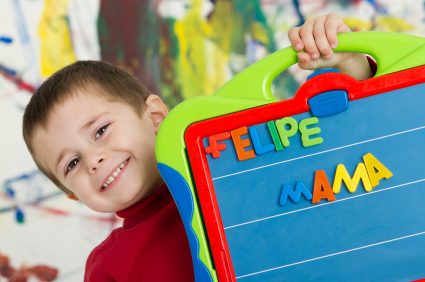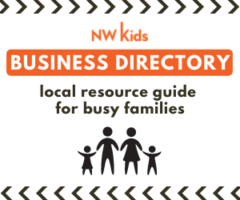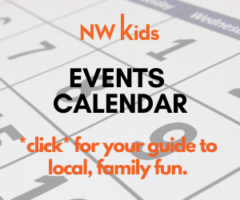

Interest in Immersion Education has grown steadily since its inception in 1971.
Families and educators see the benefits their children gain from being bilingual in our ever increasing global society. In Portland, families can lottery into immersion programs in the Public School System, attend private schools that provide immersion education or enroll in a handful of immersion preschools. Enrollment season is upon us for the 2012-2013 school year and parents are looking for answers to their immersion education questions. Below are answers to some common questions families ask about immersion education.
What is Immersion Education?
Immersion education has core characteristics that are consistent in all classrooms and in any language that is being taught. In order to be considered an immersion program, 50% of the day must be taught in the second language and is taught through subject area instruction. In addition, teachers are fully proficient in the second language and keep a very clear and sustained separation of languages as they teach. Programs that teach colors, numbers and songs a few times a week or for a half-an-hour a day, are not considered immersion programs.
What are the benefits of learning a second language?
Numerous studies have shown that children who learn a second language demonstrate greater cognitive development, creativity, and divergent thinking than monolingual children. Also, when children have adequate exposure to two languages at a young age, they are more flexible and creative (Bamford and Mizokawa, 1991). Other studies show that people who are competent in more than one language outscore monolinguals on tests of verbal and nonverbal intelligence (Bruck, Lambert, and Tucker, 1974; Hakuta, 1986; Weatherford, 1986).
Why learn a second language in the preschool years?
Emotionally, children are usually less inhibited than adolescents or adults. This lowers what language acquisition experts call the “affective filter” (Krashen, 1985), making them more likely to try out and use a second language. There have also been studies supporting what is called the “critical period” a biologically determined period of time early in life when language is acquired more easily (Brown, 1987). Most experts agree that this important period ends between the ages of ten and twelve, reinforcing the importance of learning a second language at a young age.
When can I expect my child to start using their second language?
Most children will go through a “silent period” when “the child is building up competence in the second language via listening, by understanding the world around him” (Krashen, 1982). All children are different and the length of the “silent period” varies from child to child. Your child’s personality certainly plays a role. Finally, by sparking interest, providing low anxiety environments and supporting your child’s self esteem, children at preschool will feel more comfortable using a second language more quickly.
Will my child be confused?
Children are very sensitive to the different ways people speak. They notice moods, politeness, gender differences and more. This can also be applied to learning a second language. In addition, skilled teachers use techniques and strategies to make learning more understandable thus accelerating second language learning.
Learning a second language enhances your child’s opportunities for future success in both their professional and personal lives. It prepares them for a global society that requires a better understanding of other cultures in their own backyard and around the world. It will also give them the ability to be more creative, critical thinkers, and to improve their overall learning and achievement. Give your child the gift of a second language!
Stacey Alonso is the director of Aprende con Amigos Preschool Academy, a Spanish Immersion Preschool, in North Portland. Stacey received her BS in Early Elementary Education from the University of Wisconsin-Madison, and taught in a variety of Pre-K, K and 1st grade classrooms, including a dual-language Spanish immersion program. Stacey also spent years as an educational consultant and focused on helping school districts implement or improve their ESL, bilingual, or immersion programs. If you would like to learn more about Aprende con Amgios – Preschool Academy please visit their website at www.aprendeconamgios.com.
References:
Principles of Language, Learning and Teaching by H.D. Brown
Principals and Practice in Second Language Acquisition by Stephen Krashen
Raising Bilingual Children by Antonella Sorace and Bob Ladd
2 thoughts on “Give Your Child the Gift of a Second Language”
Comments are closed.




In 2006, chinese was designated as a “critical” needs foreign language by the U.S. Government. Today, only 60,000 out of 54 million elementary and secondary school children in the U.S. are learning Chinese. There is a shortage of Americans who achieve competency in this critically important language.
Starting chinese early is a tremendous gift for your child! My child is learning it effortlessly at 6 🙂
Thanks for the input!